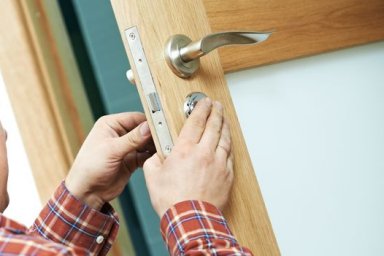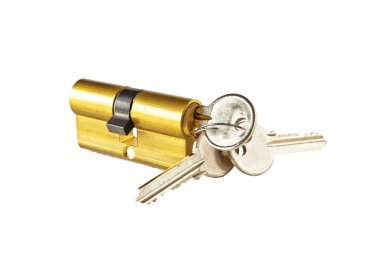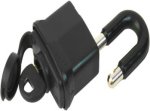There are many different types of locks but the main locks you are likely to find on a residential property are listed below. It is helpful when contacting us if you are able to identify which type you have.
Mortice Deadlock
Mortice locks fit into a slot cut into the edge of the door and are often referred to as ‘Chubb’ locks but are actually made by many different companies. Most insurance companies specify that the lock must contain at least 5 levers and conform to British Standards 3621. The deadlocking feature means that a thief can’t smash a nearby glass panel to open the door from the inside or, having entered through a window, carry your belongings out through the door. There are two variations of deadlocks, the mortice deadbolt and the mortice sashlock. A sashlock will have a handle attached in order to open the door whereas the deadbolt has no handle.
Rim lock or Night latch
A rim lock is attached to the face of the door and latches automatically when you close the door unless held open with the snib. They are commonly referred to as ‘Yale’ locks but can be made by many different companies. A rim lock should be used in conjunction with a mortice deadlock.
Automatic deadlocking rim lock
This locks automatically when the door is closed and is more secure than other types of rim latch. It needs a key to open it from both the inside and the outside and should meet BS: 3621.
Multi-point lock
Multi-point locks are usually found in UPVC (plastic) and aluminium doors and employ a combination of hooks, bolts and rollers to secure the door. They are usually operated with a euro cylinder in either a ‘keyway’ or oval shape.





 Paladin Locksmiths offer a comprehensive 24 hour, 7 days a week, 365 days a year service. We are a local, fully trained, independent company based in Skelmersdale, Lancashire, providing a competitively priced reliable service.
Paladin Locksmiths offer a comprehensive 24 hour, 7 days a week, 365 days a year service. We are a local, fully trained, independent company based in Skelmersdale, Lancashire, providing a competitively priced reliable service. Some information you may find useful when considering your security requirements.
Some information you may find useful when considering your security requirements.
 Paladin Locksmiths service an area within a radius of approximately 12 miles from
Paladin Locksmiths service an area within a radius of approximately 12 miles from
Comments are closed.